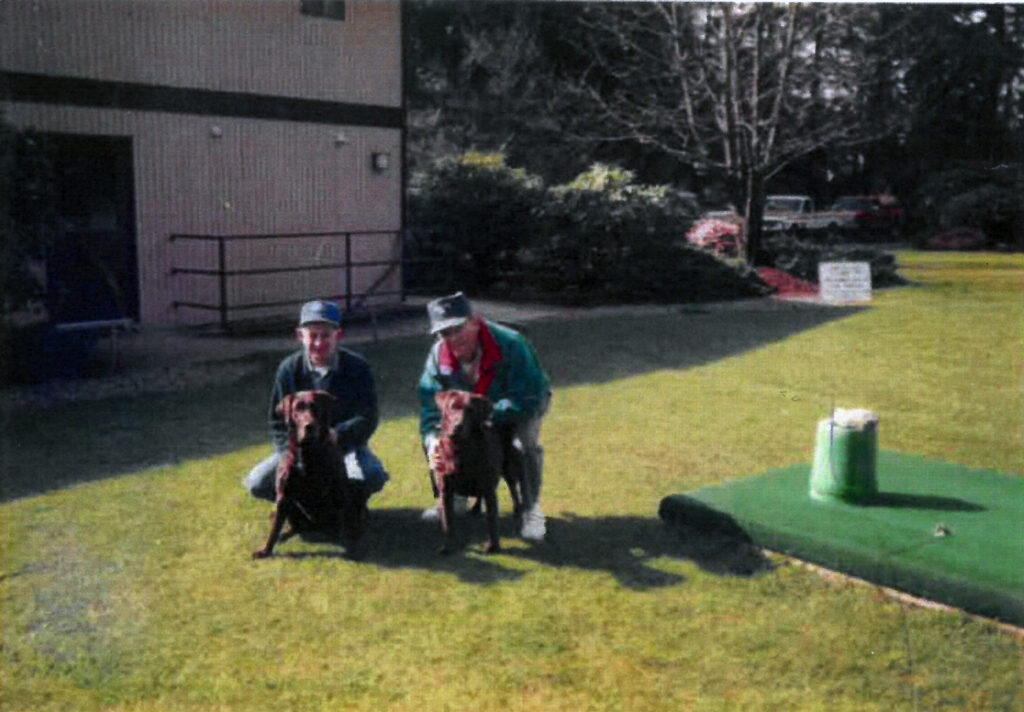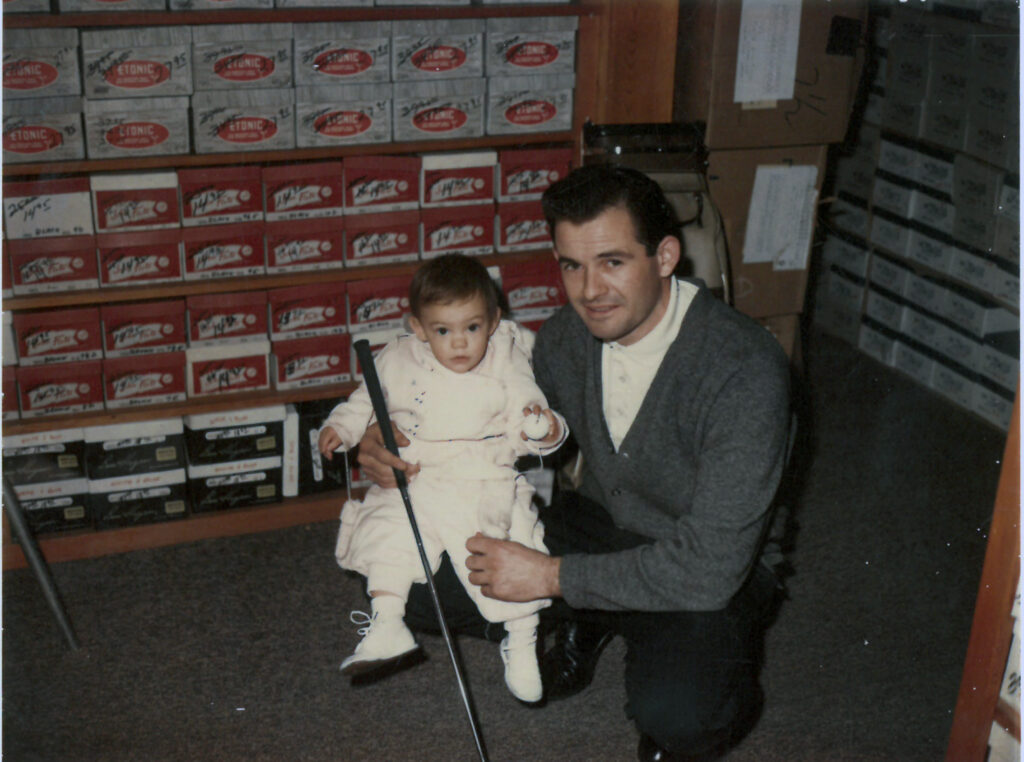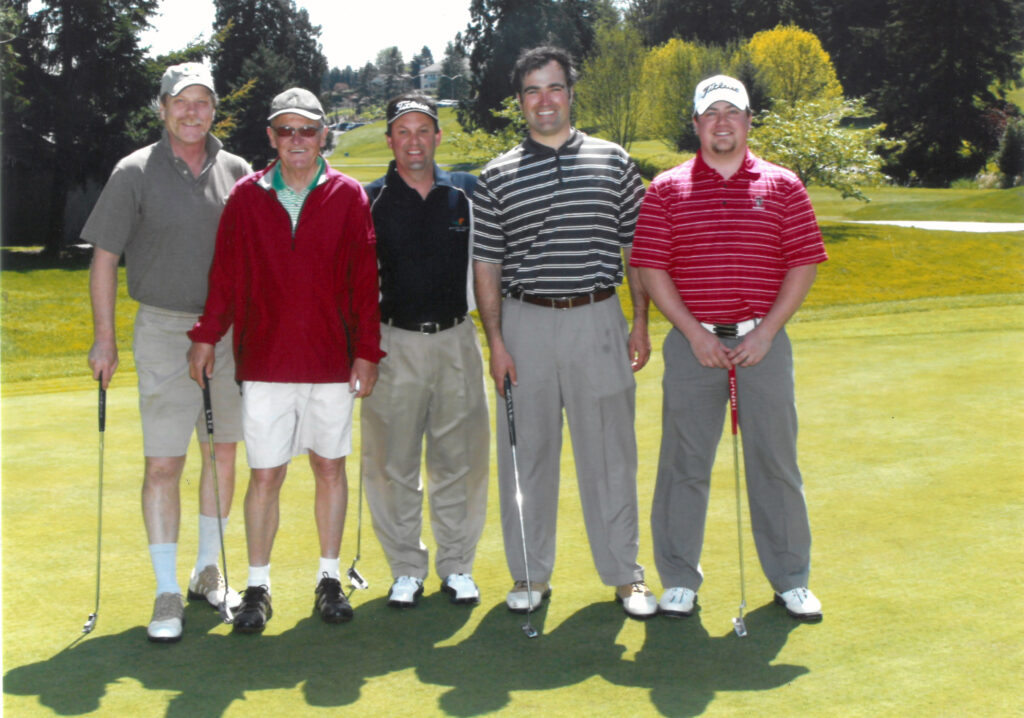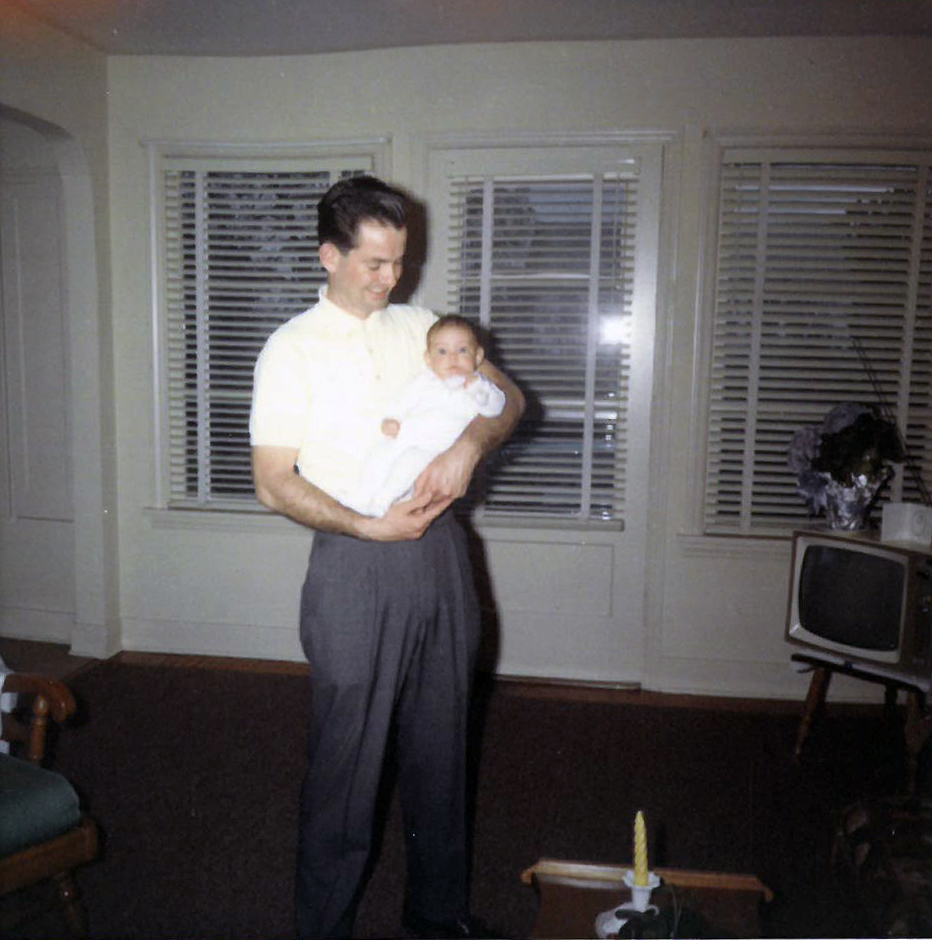This column features recollections of the author’s 35 years as a golf writer. These installments stem from his many travels and experiences, which led to a gradual understanding that the game has many intriguing components, especially its people.
The term “lifer” usually defines a career soldier, someone who’s worked at a company or organization for decades, or, worse, a criminal sentenced to prison until death.
Bruce Christy falls into a whole different – and far more uplifting – “lifer” category. The 57-year-old has worked in golf ever since he was a wee lad, forging a career that’s involved countless ups and downs, myriad challenges and wearing nearly every “hat” possible.

Bruce’s journey was launched with the help of his father, George, a PGA of America member who worked in the profession for years and owned and operated Christy’s Golf Course and Driving Range in Federal Way, Wash. Here’s my Q&A with Bruce, who reflects on his winding path in golf, one that also led him to serve as a course superintendent.
Jeff Shelley: I assume you became interested in golf because of your father. Please describe how he helped develop your interest in golf.
Bruce Christy: “My father was a determined individual whose work ethic was second to none, and he piqued my interest in the golf business. I never looked back once I got started. He began working at Puetz Golf Range [founded in 1945] as a teenager when it was originally located near Haller Lake in north Seattle. He started as an outside range kid and eventually worked his way up into the golf shop.

“His longtime aspiration was to become a forest ranger and not a golf professional. When he enlisted in the U.S. Army during the Korean War, he was certain to find himself on the front lines as his love of the outdoors made him a deadeye shot with the rifle. But during a field-shooting test he was made to wear goggles, which fogged up, and wasn’t as accurate as he normally was.
“The general at his army base in Maryland asked the troops if anyone could type. My father was a proficient typist and went to work for the general. Once they found Dad was also good at golf, he was put on the base team that competed against other squads in the area as well as generals and military brass. This was a blessing as it kept him from seeing any live action.
“He later took a job working at the Army-Navy Country Club in Arlington, Virginia. That’s where he met my mother, Arlene Taylor, who was studying to become a nurse at Georgetown University. My father worked alongside another assistant professional – Lou Graham – for about a half-year before Graham left to join the PGA Tour [Graham went on to win six Tour titles, including the 1975 U.S. Open].

“After Dad married my mother, they moved back to Seattle, and he resumed his now PGA professional career at Puetz [pronounced “putts”]. He gave lessons and, for years to come, became their best salesperson. They started a family that includes Karen (now 58), who’s currently the first assistant superintendent at The Home Course in Dupont, Wash; me; David (55), a surveyor who worked with the golf course architects at 54-hole Suncadia Resort in Roslyn, Wash.; and Robert (51), who has done highway-construction projects around the state.
“Dad worked at Puetz Golf for 37 years and was told he would become a manager. But he decided to run his own golf facility and started the process of finding land. He bought 30 acres in Federal Way [south of Seattle], developed the property with family help, and opened a driving range and executive 10-hole course. This was family-run for the next 30 years. I eventually worked part-time there while attending the University of Washington and starting my own PGA career. At the UW I took several Communications classes in preparation for a career as a sports reporter or broadcaster.”
JS: After getting your start at Christy’s Par-3 and Driving Range, please describe your career path in golf, including the positions you held at various courses/clubs after turning pro.
BC: I started working at Puetz Golf Range when I was about 7 or 8 years old. I shagged balls away from fences, broke down cardboard boxes, swept tee lines and refilled the Coke machine. I made 25 cents an hour every Saturday and Sunday to help pay off my first set of Sam Snead irons and woods. It took seemingly forever at that pay rate!
“I worked at Puetz through high school and college. I later became the youngest manager of the Aurora Avenue store and helped them open a new store in Bellevue during my tenure. I’ve worked in Washington State’s golf industry for just over 50 years. Though I’ve had many offers to leave, I never seriously entertained them. Golf has always been my passion.

“Among my positions: assistant professional at Nile Golf Course in Mountlake Terrace; opened the then-new Willows Run Golf Complex [now 45 holes] as an assistant pro; Sand Point Country Club in Seattle as both the second and first assistant. I left that club – my favorite job ever – to take my first head professional job at Inglewood Golf Club in Kenmore.

“After four-plus years at Inglewood, I became the director of golf for the city of Everett [two 18-hole courses], working for Golf Resources Inc., run by Ron Hagen and Ron Coleman. When GRI lost its lease and Billy Casper Golf took over, I worked for BCG for several years as the GM/head professional and enjoyed working for this large management company.
“When the city decided not to renew BCG’s lease, I was asked about working at White Horse Golf Club in Kingston. I had never heard of it but stopped by on my way to our beach cabin in Allyn. I realized it was not on Bainbridge Island and was a short ferry commute from my home in Edmonds. Twice I interviewed with owner/developer Bob Screen, each for three hours. The third time he asked for an interview I told him to either hire me or not, but I wanted the job and could start the next day.

Screen hired me and, over time, we worked well as a team. We had a mutual respect and shared the same vision of what could be accomplished at the site. I began my 17th season at White Horse in December 2022 and am amazed, when looking back, all that we’ve accomplished.”
JS: What are some of the most interesting positions you’ve held, and what life lessons did you learn from them? Feel free to discuss any memorable characters encountered over the years.
BC: “You know I have never held a job that wasn’t in the golf industry other than being a paperboy way back when. That was an interesting experience as a little kid delivering to and collecting from the houses, watching people hide when I knocked on their door to get paid. But if they didn’t get a paper they sure complained!
“Some people say that in life there are seven memorable characters who will influence you. I count myself very lucky to have met many wonderful folks over the years, and some real characters as well. My grandfather, Lloyd Taylor, was the best man in my wedding at Sand Point. He made such indelible impressions that they’ve stuck with me to this day. Serious and a good businessman, he worked for the government, but was so fun to be around when with family and friends. He taught me how to keep work and fun separate.
“My parents gave me a tremendous work ethic. I’ve always tried to emulate them, pushing outside my comfort zone while seeking to improve. On weekends in high school, I’d recruit some friends and we’d hand-pick the driving range of 80,000 golf balls from 6:00 a.m. to 10:00 a.m. I would sleep in my car until 1:00 p.m., then go to work until 10:00, repeating this cycle for days on end.
“I had a Little League baseball coach who demanded the best of his players, kind of like basketball’s Bobby Knight. He was such a creative innovator that we all would walk through fire for that guy.

“Some of my favorite jobs were just because of the fun factor. Some memorable characters I worked with at Puetz include David Puetz, who I had known all my life as my dad worked at Puetz for nearly four decades. The cast of characters there was like a sitcom. These included my bosses – Billy Derickson, Allan Clark and original owners, Al and Ruby Puetz, who were members at Inglewood. Our closeknit group of employees played golf and hung out on our days off. We worked so well together selling golf clubs and products that the big bosses left us alone as we were productive in our crazy but effective ways.
“I put myself through college working full-time and wouldn’t change a thing about the challenge of studying on campus at 6:30 a.m. each morning before starting the first of four to five classes at 8:00, carrying 18 to 21 credit hours each quarter. Then I would go to work from noon to 10:00 p.m. at night and even do the after-hours cash drops at the bank as a 19-year-old.

“The most fun I ever had in the golf industry was at Sand Point. This was my first experience working at a private club and I loved every minute of it. I got to work for the ultimate character, head professional Ron Stull, my boss/mentor during my five years there. I learned more about the golf industry from ‘Stully,’ who wanted me to be a great professional and made sure I learned things the right way.
“Other folks there included general manager, Jack Kirkpatrick, who took me under his wing and really went to bat for me when I applied for the head pro position at Inglewood. Oh, if the walls could talk – the stories they could tell – about co-workers Mike Hoisek and Brad Treadwell, as well as members Ollie Cobb, George Palis, Jerry Fehr, George Tomlinson, Terry Thomas, and others who made that place so much fun. It was a bit of a letdown when I started at Inglewood – whose members were decidedly not the same fun bunch as those at Sand Point.”
JS: I know you attended the UW. Please relate that experience, including your golf team coach, memorable wins and losses, and your education emphasis, including degree.
BC: “I grew up playing every sport imaginable, but my two favorites were golf and baseball. In high school I played both through two seasons before the coaches told me they wanted me to play one of them exclusively. I picked golf. In my sophomore year we qualified for the state championship at Indian Canyon and Hangman Valley in Spokane.
“From that point on I was hooked on golf but realized my game needed to improve before receiving a college scholarship. I worked hard on my game and hoped to get a scholarship, but the only offers came from local community colleges. I decided to walk on at Green River CC and, to my pleasant surprise, so did several of the area’s better players.
“Five of us non-scholarship golfers made the team and, for two years, no one on scholarship qualified to play a single match. I did well enough to receive an offer from the UW from head coach, Bill Tindall. I was always the fifth or sixth best player on the squad each week. But we were a team loaded with outstanding golfers. We had a great mix of local talent such as Todd Tibke [winner of multiple amateur titles], Ted Himka [who beat Phil Mickelson in U.S. Amateur match-play], and Mike Swingle [a PNGA Men’s Amateur champion].
“We had a hot shot in OD Vincent [now an executive at Montage International following a stint in management with the PGA Tour] from California, who was highly recruited, and another good player from Vancouver Island, British Columbia, John Randle [now a teaching pro at Bear Mountain Resort in Victoria, B.C. after seven years on the Canadian and South African tours]. Working to put myself through school and pay for car insurance and an off-campus apartment meant I could only play two or three days a week, unlike the other guys, who were on the course seven days a week.
“UW won the Pac-10 championship in 1998, and two of our players finished in the top-five at the NCAA’s. Our assistant coaches were Doug Doxsie [Seattle Golf Club’s head professional for 27 years] and another great PGA professional and player, Tad Davis [now a teaching pro at Tacoma Country & Golf Club].
“My most memorable match was against Stanford at Broadmoor Golf Club. I carded a 74 to my opponent’s 78 for my first college win in match play. The real fun were all the side games at team practices. Vincent was the best ball-striker on the team, but I could putt the greens at Broadmoor like a mad man. OD and I always took on the field and won most of these matches.
“Tindall [a 1960 USGA Boys Junior champion who also played in several U.S. Opens] was the head professional at Broadmoor and an exemplary individual to play for and be around. He knew my father and made sure I always got a fair shake at qualifying for tournaments. My original college goal was to get a degree in Business, but that changed to Communications and Marketing at the UW. Regardless, the education and personal responsibilities that came with managing school served me well throughout my career path.”
JS: Please describe your early days at White Horse. I know they were difficult due to a lack of funding and that you held dual positions (including head pro and superintendent – which might interest our readers). List your current functions. Also, feel free to provide any strong memories of your time there.
BC: “My first day on the job I walked into the office and the then-general manager was walking out and said, ‘Good luck.’ Starting a golf course from scratch is a tremendous undertaking. The developer, Bob Screen, had been burned by many individuals early on, which cost him so much money he was initially very skeptical of everything I did.
“I had to plan for options A, B, or C all the time. Screen would break down what he wanted, and what I thought would best serve the facility. After a while, we got in sync and he trusted me, which was not his norm and something I did not take lightly.
“Our golf course superintendent could not work things out with Bob and quit in winter 2007. We tried the all-hands-on-deck approach for managing the course, but, ultimately, I became the superintendent at the behest of the owner. I managed scheduling, payroll, project-planning timelines and assigning work projects until I could hire a ‘real’ superintendent.
“My superintendent’s role lasted about five months. I was so happy when we hired an expert. We never had any aerification equipment or funding and the greens got so firm that it affected course playability and conditions. We tried to value-engineer various ways to circumvent such issues.
“I was very hands-on and liked being out on the course seeing things materialize and providing feedback. I personally took on many projects, like installing all the tee yardage signs and digging holes and filling them with concrete from the back of my Tahoe pickup since there weren’t enough maintenance vehicles. I also helped weed bunkers and purchased all the course and driving range supplies –many of which are still used today.
“I have a tremendous respect for how golf course superintendents shape a facility. I hired Erik Linsenmayer on June 7, 2007. He and I are still at the course to this day. Erik is one of the elite people at his position and has had a huge impact on how we evolved and prospered over the years. We both suffered many lean years together; times when we had to buy broken bags of fertilizer and borrow demo or used equipment to finish necessary tasks.
“Local superintendents helped us out as well, and the vendors gave us numerous breaks over the years. I brought light bulbs, staples, and paper products from home to keep the lights on and the operation running during these lean times. Screen was often taken to task by Kitsap County officials, who made things hard on him at every turn. Some of it he deserved for being stubborn, but I lost a lot of respect for local government agencies during those early days at White Horse.
“But I learned so much through this whole process and wouldn’t change a thing. Between the time I went to work for Screen in 2007 and the Suquamish Tribe’s purchase of the course in 2010, I’ve worn many ‘hats,’ including being involved in a major remodel overseen by the late John Harbottle III of the original Cynthia Dye McGarey-designed course.
“My job titles have expanded greatly. I went from being hired as the head professional/superintendent to general manager/head professional and – for the last seven years – GM/head pro/director of instruction/tournament and league coordinator, marketing manager/scheduling and payroll, and manager/merchandiser/fleet operations coordinator/manager of weddings and non-golf meetings – all while overseeing the maintenance and F&B operations and acting as the tribe’s liaison on all golf course and employee matters. Ugh!”
Related: The Joys of Hickory Golf: Making the Rounds Part 15
JS: Describe the major differences between Screen’s ownership and the Suquamish Tribe’s.
BC: “Both wanted a premier facility to showcase. But Screen’s timing was just not in the cards as the housing market crashed around him in the mid- to late-2000s, and with it went the funding required to complete the clubhouse and other projects. The Tribe is very aware what other tribes have and are doing with their golf courses. It has been actively improving our product with course renovations, building the clubhouse, acquiring new carts and maintenance equipment along with paving surrounding access roads.
“Both entities were originally a bit ‘green’ when it comes to running a facility of this nature. Early on, the Tribe elicited help from a golf management company called Touchstone Golf. Touchstone was instrumental in helping assess needs and establishing short- and long-term priorities. Once the tribe’s Suquamish Clearwater Casino and Resort had a better understanding of how golf was a valuable amenity, it returned to a sole ownership plan and has made great strides the past five years. The course is profitable. It survived COVID and the future looks bright.”
JS: What are some of the bigger tournaments the course has held in addition to the Legends of the LPGA?
“The course initially tried to attract the state’s premiere events as a marketing tool and make the public aware of the great facility we have at White Horse when we lacked funds to promote the course. We have hosted the Washington State Amateur, Washington State Two-Man Best Ball Championship (twice) and numerous junior events along with the annual PNW PGA Pro-Am in April each year.
“We hosted the PGA Tour Champions players for a junior clinic one year just before the annual Boeing Classic at Snoqualmie Ridge east of Seattle. Every other year we hold the PNW PGA North-South Cup, which features the region’s best professionals in a Ryder Cup-style affair. In 2017 and 2018, we hosted the LPGA Legends Tour and the event attracted some of the game’s greatest female players ever to tee it up. COVID shut us down the past three years, and it’s unsure if that tour will return.”
JS: Please give me any personal information you’re willing to reveal, including those who’ve furthered your remarkable career?
BC: “I don’t think I’d have been nearly as successful if I did not have the full love and support of my wife, Michele. Her cousin is Todd Erwin, a magnificent golfer and multiple Washington State Open champion. That gave Michele an understanding of just what it takes for me to follow this career path. I’m very fortunate to have had her support through my many years working in the golf industry.
“Many of my gray hairs are a direct result of the chaotic nature of the Washington State Ferry system and its current inability to have a consistent schedule. I am in line by 5:00 a.m. daily to take the 5:35 boat and I usually return to the Edmonds’ side on the 5:30 or 6:10 evening ferry. That’s on a ‘good’ day if the schedule works, anyway. But enduring three- and four-hour waits due to unforeseen ferry cancellations takes their toll after a long workday when you just want to get home.
“I have kicked around a reduced April-September work schedule, teaching a couple days and mentoring the new administration. As for the future, I have looked at running tournaments for celebrity events and assisting one of the area’s college teams, either Seattle University or UW. I have told the Titleist rep I would help on local demo days, and I might even work for the local PGA section to do calligraphy scoreboards at their events.
“I just know that whatever I choose will involve continuing to fulfill my love of this game and the golf industry.”
Jeff Shelley has written and published nine books as well as numerous articles for print and online media over his lengthy career. Among his titles are three editions of the book, “Golf Courses of the Pacific Northwest.” The Seattle resident was the editorial director of Cybergolf.com from 2000-15. He also co-founded the Northwest Golf Media Association in 1995. For seven years he served as the board president of First Green, an educational outreach program that is now part of the Golf Course Superintendents of America and Environmental Institute for Golf.



























